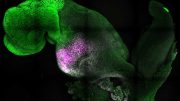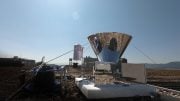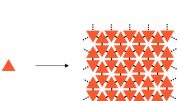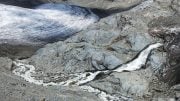
Nobel Laureate Didier Queloz, along with fellow laureate Jack Szostak and astronomer Dimitar Sasselov, has announced the creation of a new international alliance called the “Origins Federation” during the 2023 Annual Meeting of the American Association for the Advancement of Science. The federation brings together researchers working in the origins of life centers and initiatives at ETH Zurich, University of Cambridge, Harvard University, and The University of Chicago to explore the chemical and physical processes of living organisms and environmental conditions hospitable to supporting life on other planets.
“We are living in an extraordinary moment in history,” says Didier Queloz, who directs ETH Zurich’s Centre for Origin and Prevalence of Life and the Leverhulme Centre for Life in the Universe at Cambridge. While still a doctoral student, Queloz was the first to discover an exoplanet — a planet orbiting a solar-type star outside of Earth’s solar system. A discovery for which he would later receive a Nobel Prize in physics.
Within a generation, scientists have now discovered more than 5,000 exoplanets and predict the potential existence of trillions more in the Milky Way galaxy alone. Each discovery inspires more questions than answers about how and why life emerged on Earth and whether it exists elsewhere in the universe.
Technological advancements, such as the James Webb Space Telescope and interplanetary missions to Mars, accelerate access to an overwhelming volume of new observations and data, such that it will take the convergence of a multidisciplinary network to understand the emergence of life in the universe.
ETH Zurich, Cambridge, Harvard, and Chicago found the “Origins Federation”
Joining forces with chemist and fellow Nobel Laureate, Jack Szostak and astronomer, Dimitar Sasselov, Didier Queloz announced the founding of a new “Origins Federation” during the 2023 Annual Meeting of the American Association for the Advancement of Science (AAAS). While a fictional interstellar federation might immediately spring to mind, this international alliance brings together the expertise of researchers working in the origins of life centers and initiatives at ETH Zurich, University of Cambridge, Harvard University, and The University of Chicago.
Together, scientists will explore the chemical and physical processes of living organisms and environmental conditions hospitable to supporting life on other planets. “The Origins Federation,” Queloz commented, “builds upon a long-standing collegial relationship strengthened through a shared collaboration in a recently completed project with the Simons Foundation.”
What humanity could learn from extra-terrestrial biosignatures
Such collaborations support the work of researchers like Zoology professor, Emily Mitchell. Mitchell, who works with Queloz in Cambridge’s Leverhulme Centre for Life in the Universe is an ecological time traveler. She uses field-based laser-scanning and statistical mathematical ecology on 580-million-year-old fossils of deep-sea organisms to determine the driving factors that influence the macro-evolutionary patterns of life on Earth. Speaking during ETH Zurich’s Origins of Life session at the AAAS, Mitchell took participants back in time to 4-billion years ago when Earth’s early atmosphere — devoid of oxygen and steeped in methane – showed its first signs of microbial life. She spoke about how life survives in extreme environments and then evolves offering potential Astro-biological insights into the origins of life elsewhere in the universe.
“As we begin to investigate other planets, through the Mars missions,” Mitchell says, “biosignatures could reveal whether or not the origin of life itself and its evolution on Earth is just a happy accident or part of the fundamental nature of the universe, with all its biological and ecological complexities.”
Colonizing space with synthetic cells
While complex biological cells are not yet fully understood, synthetic cells allow biochemists, like Kate Adamala, University of Minnesota’s Protobiology Lab to deconstruct complex systems into simpler parts. Parts that allow scientists to understand the basic principles of life and evolution not only on Earth, but potentially life on other planets in the solar system.
Adamala launched her quest to build life from scratch as a graduate student at Harvard working with Nobel Laureate, Jack Szostak. She endeavors to create simple, cell-like bioreactors resembling the earliest forms of life by applying the principles of engineering to biology. During the AAAS, Adamala explained how synthetic cells allow scientists to study the past, present, and future of life in the universe. Unlike biological cells, it is possible to digitalize synthetic cells and transmit them across vast distances to create, for example, on demand medication or vaccines – an “Astro-pharmacy” that could potentially support life on spaceship, or even a future Martian colony. Until such time, synthetic cells offer practical applications for humanity in terms of sustainable energy systems, higher crop yields, and biomedical therapies.
What is life?
While there is not yet a comprehensive definition of life, the quest to discover its origins has inspired enthusiasm, new collaborations, and opened the doors within the scientific community’s most hallowed halls.
Origins Federation
Researchers from four leading institutions are pleased to announce their intent to create a research consortium with the goal of facilitating efficient multidisciplinary and innovative collaborative research to advance our understanding of the emergence and early evolution of life, and its place in the cosmos.
The following centers establish the Origins Federation:
- The Origins of Life Initiative (Harvard University),
- Centre for Origin and Prevalence of Life (ETH Zurich),
- Center for the Origins of Life (The University of Chicago),
- Leverhulme Centre for Life in the Universe (University of Cambridge).
The Origins Federation will pursue scientific research topics of interest to its founding centers with a long-term perspective and common milestones. It will strive to establish a stable funding platform to create opportunities for creative and innovative ideas, and to enable young scientists to make a career in this new field.
The Origins Federation is open to new members, both centers and individuals, and is committed to developing the mechanisms and structure to achieve that aim.
The Origins Federation’s inaugural science conference will take place at Harvard University on September 12 – 15, 2023.









The origin of the universe comes from the darkness and emptiness of space as many paticals like gigs comes from emptiness.
“Mitchell took participants back in time to 4-billion years ago when Earth’s early atmosphere — devoid of oxygen and steeped in methane – showed its first signs of microbial life”
The most common mistake in origin of life studies is the assumption that the Earth was “devoid of oxygen”. That leaves early abiotic attempts to form initial peptide and nucleotide bonds as well as the later evolution of photosynthesis exposed to the young Sun’s damaging and enhanced UV radiation. The only realistic protection would have been an ozone screen derived from oxygen created by the UV photodissociation of water in the early stratosphere and the loss of light hydrogen to space. Continuing to believe in the conventional anoxic atmosphere theory is a mistake. The geological evidence cannot support it any longer.
The whole definition of life is a religious term, as it implies that there is more to the world than just materials. There can only be one right answer here, and if life derives of nothing more than materials, then there is nothing special about any form of “life” at all since everything is pre-determined and there is no greater good.
However, this idea must be rejected because it is clearly evident that we have consciousness and the ability to manipulate matter in a way not congruent to pure materialism. Because of this, there must be an immaterial being that created our immaterial nature fused with our material nature.
The search for life outside of this Earth should, therefore, be directed on where the immaterial Being infused an immaterial soul into material objects would create this life.
Those who say we don’t have a comprehensive definition of life yet, like the author of this article, don’t have an understanding of history and basic philosophy and where the word life even comes from.
Life is a form of matter, nothing else
I used to think that the quest to answer this question was just due to idle curiosity, but taken as part of the entire human narrative it now appears to me as more belonging to mental illness; the insatiable need of some individuals to be god, a disease that us Westerners are much more prone to than the Eastern hemisphere. We have gods; they don’t, they have almost no mental illness, but we all up here, are seemingly stark raving mad; just look at the Ukraine; that’s our dirty work, and only an insane person would think that it’s normal and healthy.